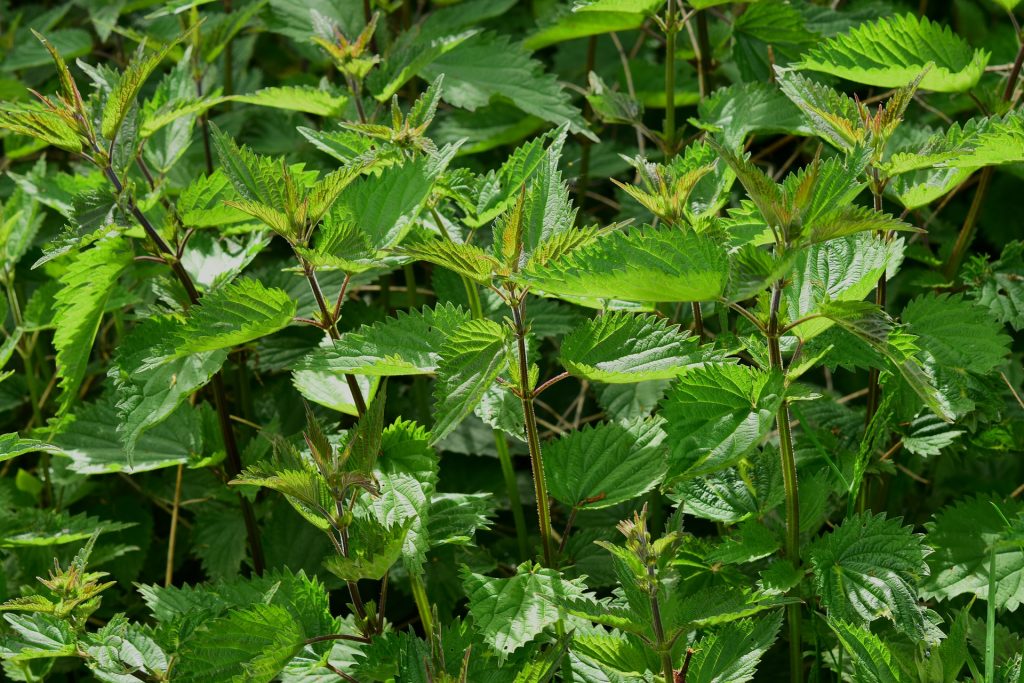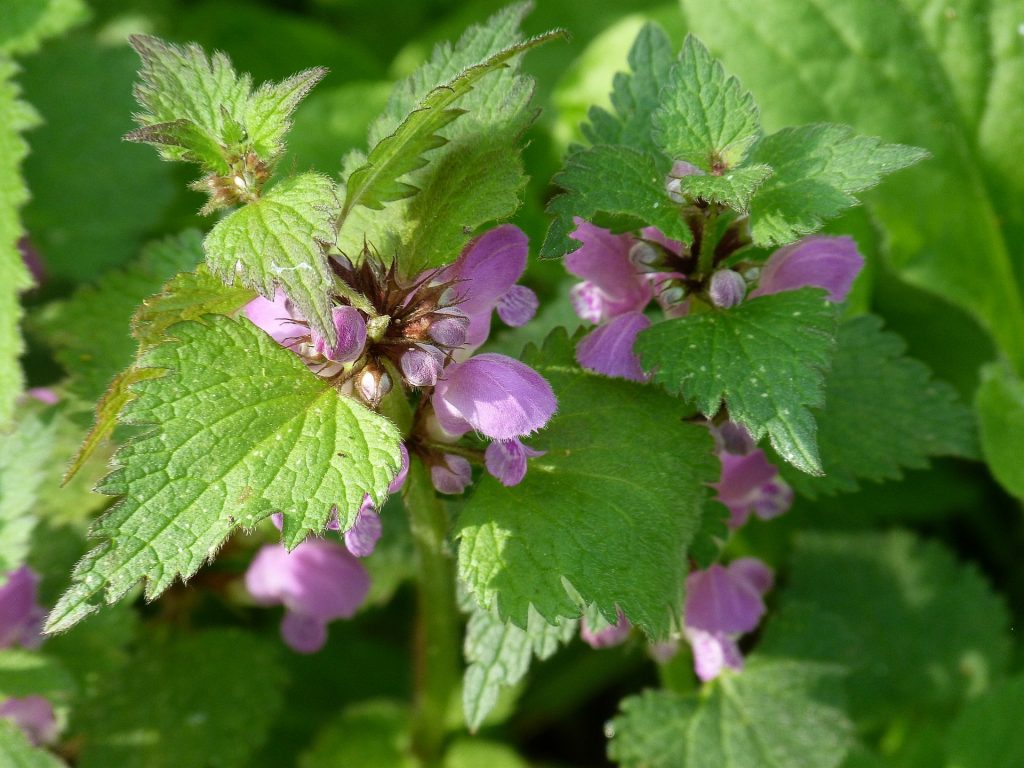 Urtica dioica is the common or stinging nettle. The stinging nettle is a flowering plant that belongs to the Urticaceae or nettle family of plants. The stinging nettle is considered a weed because of its invasive growth, and can be found in Europe, North America and parts of Asia. Stinging nettles possess fine hairs on their leaves and stems which are hollow and can inject histamine into animals to cause an uncomfortable stinging sensation called contact urticaria. However, if the hairs are disables through treatment, the entire plant is edible and contains some interesting nutritional components. This explains the long history of the use of stinging nettles as a traditional herbal remedy, for example in teas, and use as a food component. Nettles are nutritious foods and the plant material tends to be high in minerals, particularly iron. Nettle also contain a good amount of essential amino acids, although protein quality is not high. The plant material can also be high in antioxidants including vitamin C and carotenoids.
Urtica dioica is the common or stinging nettle. The stinging nettle is a flowering plant that belongs to the Urticaceae or nettle family of plants. The stinging nettle is considered a weed because of its invasive growth, and can be found in Europe, North America and parts of Asia. Stinging nettles possess fine hairs on their leaves and stems which are hollow and can inject histamine into animals to cause an uncomfortable stinging sensation called contact urticaria. However, if the hairs are disables through treatment, the entire plant is edible and contains some interesting nutritional components. This explains the long history of the use of stinging nettles as a traditional herbal remedy, for example in teas, and use as a food component. Nettles are nutritious foods and the plant material tends to be high in minerals, particularly iron. Nettle also contain a good amount of essential amino acids, although protein quality is not high. The plant material can also be high in antioxidants including vitamin C and carotenoids.

Nettle leaves are high in carotenoids and iron and in this respect are similar to spinach. In addition the researchers have reported high levels of the essential fatty acid α-linolenic acid (ALA, C18:3 (n03)) in the leaves of the nettles, which is another similarity to spinach. Nettle leaves are therefore highly nutritious, and if the strings are removed through treatment, usually cooking ot other processing steps, the leaves can be eaten raw, as can the rest of the plant. Stinging nettles are easily identified by their serrated leaves and distinctive white or pink flowers.
As with all green leaves plants, stinging nettles possess a range of carotenoids. These carotenoids are used by the plant as accessory components to photosynthesis. In times of low light then enhance photosynthetic rate, and in times of high light, the dissipate excess heat and prevent free radical damage. When animals eat the carotenoids, they are absorbed and accumulate in cell membranes where they can protect the cells from free radical damage. Carotenoids therefore possess a similar function in animals. Researchers have investigated the carotenoids in nettle leaves. For example, in one study, researchers identified nine carotenoids in the leaves. For leaves at all levels of maturity, lutein and β-carotene, and their isomers, were the main carotenoids present. In addition other minor carotenoids included neoxanthin, violaxanthin and lycopene, but the concentrations of these varied with leaves of differing maturity. Nettle leaves are therefore an excellent source of a range of nutritionally relevant carotenoids.

Dead nettles are a species of nettle from the same family as stinging nettles, and these too can be eaten in their entirety (roots, stem and leaves). However, dead nettles (Lamium species) have the advantage that they do not possess any stinging hairs.
Eat Well, Stay Healthy, protect Yourself
RdB
